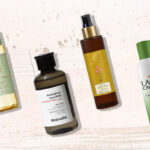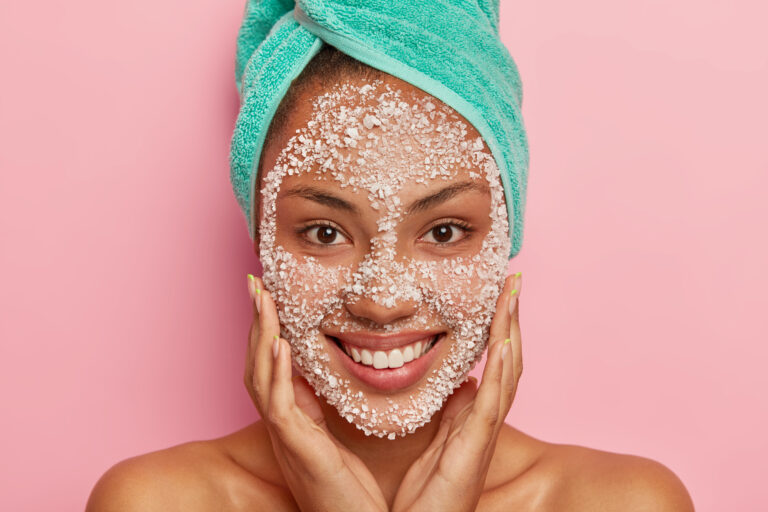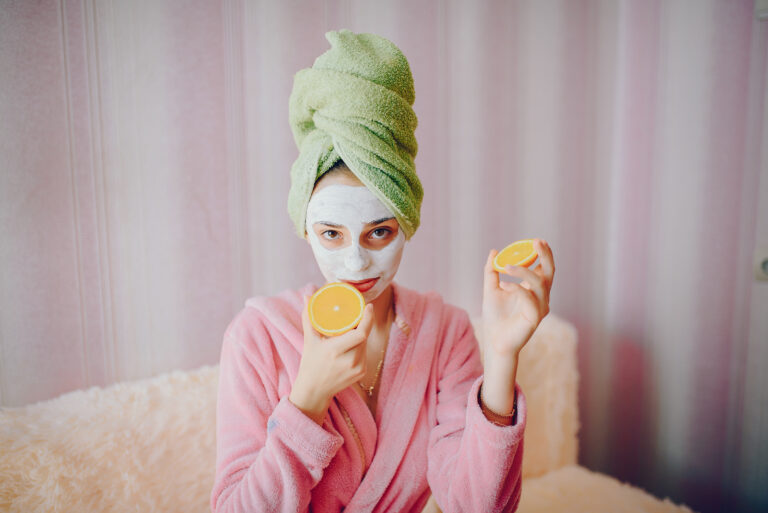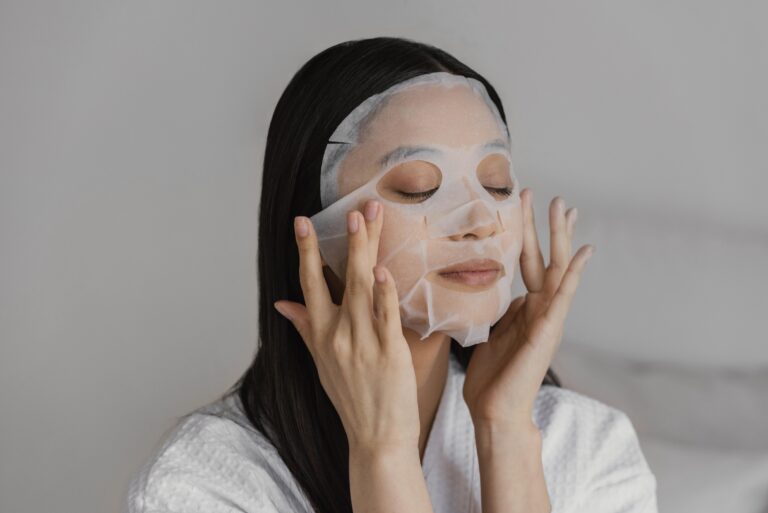Skincare 102: ultimate guide to skincare!
Skincare routine
You know, one of the most challenging aspects of starting a skincare routine is figuring out which products to use and the correct order to apply them. The sequence matters because it determines how well your skin absorbs each product and how effectively they work together. Applying products in the wrong order can prevent them from performing their best.
So, what’s the right order to apply skincare products?
The general rule is to apply products from the thinnest to the thickest consistency. That way, lighter formulas (like serums) can penetrate deeply into the skin, while heavier formulas (like moisturizers) lock everything in place. But what exactly does this mean?
Morning Routine
1. Cleansing
In the morning, the very first thing you should do is cleanse your face. Cleansing is essential because it helps remove any dirt, excess oil, and impurities that may have built up overnight. Your skin also naturally goes through its repair process while you sleep, so cleansing ensures you’re starting the day with a clean canvas.
When choosing a cleanser, make sure to pick one that’s suited to your skin type. If you have oily skin, a gel or foaming cleanser can help remove excess oil without stripping your skin. For dry or sensitive skin, opt for a cream-based or hydrating cleanser that nourishes without causing irritation.
Why is cleansing so important? Cleansing not only helps to wash away dirt and grime, but it also prepares your skin to absorb the rest of your skincare products. Think of it as the foundation for your skincare routine—it clears the way for moisturizers, serums, and sunscreen to work more effectively. Cleansing also ensures that your skin doesn’t get clogged, helping to prevent breakouts and dullness throughout the day.
Make sure to use lukewarm water, as water that’s too hot or too cold can irritate the skin. Massage the cleanser into your skin in gentle, circular motions, and avoid harsh scrubbing, which can damage the skin barrier.
Remember, cleansing is the first step in not just removing impurities, but also setting up your skin for the next products you apply. Clean skin = better results!

2. Toner
After cleansing, the next step is to apply toner. While cleansing removes dirt, oil, and impurities, your pores can temporarily open up, leaving your skin more vulnerable. A toner helps to close and tighten those pores, creating a smoother surface for the rest of your skincare products to be absorbed more effectively.
Why is toner important? Toners not only help to balance your skin’s pH after cleansing (which can sometimes be disrupted), but they also hydrate and prepare your skin for the next steps in your routine. For those with oily or combination skin, toners can help control excess oil production, reducing the likelihood of clogged pores and breakouts.
Toners for Acne-Prone or Sensitive Skin: If you have acne-prone or sensitive skin, a toner can be a soothing step to calm irritation and redness. Many toners are formulated with ingredients like witch hazel, rose water, or aloe vera, which can help reduce inflammation and provide a cooling sensation. This makes toners especially beneficial after a gentle exfoliation or if you’ve been dealing with skin irritation.
Additionally, some toners are packed with active ingredients like salicylic acid or glycolic acid, which are great for tackling blemishes and preventing acne flare-ups. Just make sure to choose a toner with ingredients that align with your skin concerns—look for alcohol-free options if you have sensitive or dry skin, as alcohol can be drying and irritating.
How to apply: To apply toner, simply soak a cotton pad with the product and gently swipe it across your face. Alternatively, you can pour a small amount into your hands and pat it directly onto your skin, which is especially helpful if you want to avoid waste.
Key benefits of toner:
- Helps to tighten and minimize pores.
- Balances and restores the skin’s pH levels.
- Preps the skin for better absorption of serums, moisturizers, and other treatments.
- Hydrates and soothes, especially if you have acne or sensitive skin.
Using toner as the second step in your routine ensures that your skin is prepped, balanced, and ready to absorb all the nutrients from the following products!

3. Serum
After applying toner, your skin is prepped and ready for the next crucial step: serum. Serums are powerful, concentrated treatments designed to target specific skin concerns. They form a protective barrier that helps lock in moisture while providing your skin with the nutrients it needs to heal, repair, and rejuvenate.
Why is serum important? Serums are typically packed with active ingredients like vitamin C, retinol, hyaluronic acid, or peptides, which directly address your skin’s unique needs. They work deeper into the skin compared to moisturizers, offering more intense hydration, brightening, anti-aging effects, or acne-fighting properties. If you have skin concerns like dark spots, acne, fine lines, or uneven texture, serums can be the key to accelerating skin repair and providing visible improvements over time.
Serums for Different Skin Concerns:
- For Acne-Prone Skin: Look for serums with salicylic acid, niacinamide, or tea tree oil. These ingredients help fight bacteria, control oil production, and prevent breakouts. They can also calm inflammation and redness associated with acne.
- For Dark Spots and Hyperpigmentation: A serum containing vitamin C, alpha arbutin, or licorice extract can work wonders. These ingredients help brighten the skin, fade dark spots, and even out skin tone.
- For Dry Skin: If you’re dealing with dry or dehydrated skin, go for a serum rich in hyaluronic acid or glycerin. These ingredients attract moisture, giving your skin a plump, hydrated look.
- For Fine Lines and Aging: If fine lines, wrinkles, or sagging are your concerns, look for serums with retinol, peptides, or antioxidants like vitamin E. These ingredients promote collagen production and improve skin elasticity, giving your skin a firmer, more youthful appearance.
How to apply: After toning, apply a few drops of your serum onto your fingertips and gently press it into your face. Focus on areas of concern (like dark spots or acne-prone zones) but avoid rubbing it in too harshly—serums should be absorbed gently, allowing the active ingredients to work their magic. Let the serum absorb fully before moving on to the next step.
The Role of Serums in Skin Repair: Serums not only provide targeted solutions but also act as a barrier to prevent further damage. Whether you’re healing acne scars, reducing pigmentation, or fighting signs of aging, a serum helps repair the skin while protecting it from environmental stressors like pollution and UV rays. It’s a vital step for maintaining skin health and addressing specific issues at a deeper level.
Key Benefits of Serums:
- Targeted treatment for specific concerns like acne, dark spots, or wrinkles.
- Boosts skin repair and regeneration, helping to fade scars, reduce blemishes, and even skin tone.
- Nourishes deeply with concentrated active ingredients, offering faster and more visible results.
- Improves skin barrier function to protect against further damage.
By using a serum suited to your skin’s needs, you’re giving your skin the specialized care it deserves, ensuring it can heal, recover, and glow from within!

4.Eye cream
The skin around your eyes is thinner and more sensitive than the rest of your face, which is why it requires special attention. This is where eye cream comes into play. Eye creams are formulated specifically for the delicate under-eye area, addressing concerns like puffiness, dark circles, and fine lines.
Why is eye cream important?
The eye area is prone to dryness, fine lines, and puffiness due to factors like lack of sleep, aging, stress, and environmental factors. Regular use of an eye cream can help reduce the appearance of these issues by providing targeted hydration and nourishment. It also helps to improve skin elasticity, which can help combat sagging and wrinkles in the long run.
What does eye cream do?
- Hydrates and Firms: Eye creams often contain hydrating ingredients like hyaluronic acid, which plumps and firms the skin, reducing the appearance of fine lines.
- Reduces Puffiness: Caffeine or other soothing ingredients in eye creams can help reduce puffiness and swelling, making the eyes appear more awake and refreshed.
- Brightens Dark Circles: Many eye creams include ingredients like vitamin C, peptides, or licorice extract, which help to lighten dark circles and brighten the under-eye area.
How to apply: To apply eye cream, gently tap a small amount (about the size of a pea) onto your ring finger, which applies the lightest pressure. Gently tap the product around the entire under-eye area, avoiding direct contact with your eyelids. Be sure not to rub or pull at the skin, as the skin around your eyes is delicate.
When to apply: Eye cream should be applied after serum and before moisturizer, ideally both morning and night. This ensures that the product can penetrate the skin and provide maximum benefits without interference from heavier moisturizers.
Key Benefits of Eye Cream:
- Reduces puffiness and dark circles to give a refreshed look.
- Smoothes and firms the skin, helping to prevent and reduce fine lines.
- Hydrates the delicate skin around your eyes, keeping it soft and supple.
By including an eye cream in your routine, you’re addressing the specific needs of your under-eye area, helping to brighten and rejuvenate the skin, and giving your eyes a well-rested, youthful appearance!

5. Moisturizer
Moisturizing is arguably the most important step in your skincare routine because it helps lock in all the goodness from the previous products and ensures your skin stays hydrated throughout the day. Regardless of your skin type, moisturizing is crucial to maintaining a healthy skin barrier. It prevents your skin from losing the moisture it needs, especially after applying serums or toners that can sometimes leave the skin feeling slightly dry.
Why is moisturizer so important? Moisturizer acts as a protective shield, sealing in the active ingredients and moisture from your skincare routine. For dry skin, it provides essential hydration, while for oily skin, it keeps oil production balanced by ensuring your skin isn’t stripped of its natural oils. Using a moisturizer tailored to your skin type (whether light and gel-based for oily skin or richer for dry skin) helps keep your complexion smooth, soft, and balanced all day.
How to apply: Take a generous amount and apply it evenly across your face and neck, massaging gently in upward circular motions. Don’t forget the delicate skin around your eyes and neck, as they are often overlooked in moisturizing.

6. Sunscreen
Sunscreen is a crucial step that many people tend to forget, but it’s arguably the most important product in your morning skincare routine. UV rays from the sun can cause serious damage to your skin, leading to premature aging, dark spots, and even skin cancer. Sunscreen creates a protective barrier, preventing harmful UV rays from penetrating the skin and causing damage.
Why is sunscreen so important? Exposure to UV rays accelerates the breakdown of collagen and elastin in the skin, contributing to fine lines, wrinkles, and sagging. Sunscreen also helps prevent sunburn, hyperpigmentation, and skin inflammation. Whether it’s sunny or cloudy, UV rays can still penetrate, so sunscreen should be applied daily to keep your skin safe and youthful.
How to apply: Apply a broad-spectrum sunscreen with SPF 30 or higher generously over your face and neck. Make sure to reapply every two hours if you’re spending time outdoors. Don’t forget areas like your ears, the back of your neck, and even your hands—places that are often overlooked but can show signs of sun damage over time.

7. Lip Balm
Just like your skin, your lips need moisture too! The skin on your lips is thinner and more delicate, so it’s more prone to dryness and chapping. Lip balm is the perfect way to keep your lips soft, smooth, and hydrated throughout the day. A good lip balm also helps prevent cracking, especially in harsh weather conditions or when using drying products like matte lipsticks.
Why is lip balm important? Lip balm locks in moisture, prevents irritation, and provides a protective barrier against environmental stressors like wind and cold weather. It also creates a smooth surface for lip products if you like to wear lipstick or gloss. Regularly applying lip balm will keep your lips hydrated, preventing discomfort and dryness.

Night time routine
1. Oil cleanser
After a long day, the first step in your evening skincare routine should always be oil cleansing. Oil cleansers are designed to break down makeup, sunscreen, and the impurities that have built up on your skin throughout the day. Whether you’ve worn heavy makeup or just applied sunscreen, oil cleansers dissolve these products effortlessly, without stripping the skin of its natural moisture.
Why oil cleansing is essential: Oil cleansers effectively remove long-lasting makeup, SPF, and environmental pollutants that can be hard to remove with water-based cleansers alone. Unlike traditional cleansers, oil-based formulas bind to makeup and grime, lifting them away without rubbing or harsh scrubbing. This first step ensures your skin is thoroughly prepped for the rest of your skincare routine.
How to use: Apply a small amount of oil cleanser to dry skin and massage gently in circular motions. You can use your fingers or a soft cleansing cloth to break down makeup and dirt. Add a little warm water to emulsify the oil, then rinse thoroughly. Your skin will feel clean but not stripped.

2. Cleanser
After removing the bulk of makeup, sunscreen, and grime with your oil cleanser, the next step is a foam or cream-based cleanser. This second cleanse is crucial because it ensures that all remaining residue, oil, and dirt are completely washed away. Double cleansing—using both an oil-based cleanser followed by a water-based cleanser—ensures a deeper clean, leaving your skin feeling fresh and free of impurities.
Why double cleansing matters: Double cleansing is especially important at night when your skin has accumulated more dirt, oil, and makeup than usual. The first oil cleanser tackles makeup and sunscreen, while the second cleanser targets the finer particles like excess oil and any remaining debris. This step helps prevent clogged pores, breakouts, and ensures your skin is perfectly prepped for the next steps in your routine, like toning and moisturizing.
How to use: After rinsing off the oil cleanser, apply a foam or cream cleanser to your damp skin. Gently massage it in, focusing on areas where dirt tends to accumulate (like your T-zone). Rinse with lukewarm water, and pat your skin dry with a clean towel. This will leave your skin feeling refreshed and properly cleaned without being overly dry or tight.
Why Double Cleansing is So Effective:
- Thorough Removal: Double cleansing ensures that makeup, sunscreen, dirt, and oil are thoroughly removed from your skin, reducing the chances of clogged pores and breakouts.
- Prepares Skin for Other Products: A clean face allows the active ingredients in your toners, serums, and moisturizers to absorb more effectively and work their best.
- Prevents Skin Issues: By removing the buildup of impurities, you help prevent skin concerns like acne, dullness, and irritation caused by leftover makeup or sunscreen.

3. Toner
To apply toner, simply soak a cotton pad with the product and gently swipe it across your face. Alternatively, you can pour a small amount into your hands and pat it directly onto your skin, which is especially helpful if you want to avoid waste.

4. Serum
After toning, apply a few drops of your serum onto your fingertips and gently press it into your face. Focus on areas of concern (like dark spots or acne-prone zones) but avoid rubbing it in too harshly—serums should be absorbed gently, allowing the active ingredients to work their magic. Let the serum absorb fully before moving on to the next step

5. Eye cream
The skin around your eyes is thinner and more sensitive than the rest of your face, which is why it requires special attention. This is where eye cream comes into play. Eye creams are formulated specifically for the delicate under-eye area, addressing concerns like puffiness, dark circles, and fine lines.
How to apply: To apply eye cream, gently tap a small amount (about the size of a pea) onto your ring finger, which applies the lightest pressure. Gently tap the product around the entire under-eye area, avoiding direct contact with your eyelids. Be sure not to rub or pull at the skin, as the skin around your eyes is delicate.
When to apply: Eye cream should be applied after serum and before moisturizer, ideally both morning and night. This ensures that the product can penetrate the skin and provide maximum benefits without interference from heavier moisturizers.

6. moisturizer
Take a generous amount and apply it evenly across your face and neck, massaging gently in upward circular motions. Don’t forget the delicate skin around your eyes and neck, as they are often overlooked in moisturizing.

7. Lip Balm
ip balm locks in moisture, prevents irritation, and provides a protective barrier against environmental stressors like wind and cold weather. It also creates a smooth surface for lip products if you like to wear lipstick or gloss. Regularly applying lip balm will keep your lips hydrated, preventing discomfort and dryness.

Weekly routine
1. Scrub
A face scrub is a key step in your skincare routine that helps remove dead skin cells, revealing smoother, brighter skin underneath. It’s an exfoliating treatment that works by sloughing off the top layer of dead skin, unclogging pores, and helping to promote healthy cell turnover.
Why is a face scrub important?
Exfoliating with a face scrub helps improve skin texture by removing the buildup of dead skin cells that can lead to clogged pores, rough patches, and dullness. Regular exfoliation can also help reduce the appearance of blackheads, prevent breakouts, and make your skin look more radiant and youthful. It allows your skincare products, like serums and moisturizers, to penetrate deeper and work more effectively.
What does a face scrub do?
- Removes Dead Skin Cells: By sloughing off the outer layer of dead skin, face scrubs reveal fresh, new skin cells.
- Unclogs Pores: Regular exfoliation helps prevent clogged pores, reducing the risk of blackheads and breakouts.
- Improves Skin Texture: Regular use can smooth rough patches and leave your skin feeling soft and polished.
- Brightens the Complexion: Exfoliating can help even out skin tone and give your skin a healthy glow by removing dulling debris.
How to use:
- Apply a small amount of the scrub onto damp skin. Be gentle and avoid scrubbing too harshly, as this can irritate the skin.
- Use gentle, circular motions to massage the scrub into your face, focusing on areas that tend to get rough or congested, like the forehead, nose, and chin (the T-zone).
- Rinse thoroughly with lukewarm water and follow up with your regular skincare routine.
How often should you use a face scrub? Exfoliating too frequently can irritate your skin, so it’s important to find the right balance. For most skin types, exfoliating 2–3 times a week is enough. However, if you have sensitive skin, you might want to limit it to once a week or use a gentler scrub.
Tips for Choosing the Right Scrub:
- For sensitive skin: Look for a scrub with finer, softer exfoliating particles and avoid harsh scrubs with large, rough grains that can damage the skin.
- For oily or acne-prone skin: Choose a scrub with ingredients like salicylic acid or charcoal, which can help cleanse and reduce excess oil production.
- For dry skin: Opt for a scrub with hydrating ingredients, like oils or soothing aloe, to prevent your skin from becoming dry or irritated.
Key Benefits of Face Scrub:
- Exfoliates and smooths the skin by removing dead skin cells.
- Unclogs pores, helping to reduce the risk of acne and blackheads.
- Boosts radiance by revealing brighter, more even skin.
- Enhances the absorption of other skincare products.
By incorporating a face scrub into your routine, you’re helping to reveal fresh, glowing skin while addressing skin concerns like dullness, clogged pores, and uneven texture. Just be gentle and don’t overdo it, and your skin will thank you!

2. Mask
A face mask is a powerful skincare treatment that provides concentrated benefits to target specific skin concerns. Whether you’re looking for deep hydration, brightening, acne-fighting, or detoxifying effects, face masks can address a wide range of skin needs and give your complexion an extra boost.
Why is a face mask important?
Face masks allow your skin to absorb powerful active ingredients more effectively because they sit on the skin for a longer period of time. They provide a deep, intensive treatment that helps improve your skin’s texture, tone, and overall appearance. Using a mask can offer instant results and is an excellent way to give your skin a pampering session.
Key Benefits of Using a Face Mask:
- Targeted treatment for specific skin concerns like dryness, acne, or dullness.
- Deep hydration to nourish the skin and maintain moisture balance.
- Improves skin texture and tone by addressing roughness, fine lines, and uneven pigmentation.
- Instant results that leave your skin feeling refreshed, radiant, and revitalized.
Using a face mask is like giving your skin a concentrated dose of skincare. It can instantly improve your complexion and provide a relaxing, spa-like experience. Whether you’re addressing hydration, breakouts, or skin texture, there’s a face mask suited to your skin’s needs!

3. Lip scrub
A lip scrub is a gentle exfoliating treatment designed to slough off dead skin cells from your lips, leaving them soft, smooth, and hydrated. The skin on your lips is thinner and more delicate than the rest of your face, which makes them prone to dryness, chapping, and buildup. Lip scrubs help address these issues, giving your lips a healthy, plump appearance.
How often should you use a lip scrub? Since the skin on your lips is delicate, it’s best to exfoliate 1–2 times per week. Over-exfoliating can lead to irritation or dryness, so be gentle and give your lips time to recover between scrubs.

4. Sheet mask
A sheet mask is a quick and convenient way to give your skin a boost of hydration and targeted treatment. Made from materials like cotton, hydrogel, or cellulose, sheet masks are soaked in serums or essences that are packed with beneficial ingredients to address various skin concerns. Simply place the mask on your face and relax as it works its magic.
How to use a sheet mask:
- Cleanse your skin to remove any makeup, dirt, and oil.
- Apply a toner (optional) to prepare your skin for better absorption of the mask’s ingredients.
- Remove the sheet mask from its packaging and gently unfold it.
- Place the mask on your face, aligning the cutouts with your eyes, nose, and mouth. Smooth it out to ensure it fits comfortably on your skin.
- Relax and leave the mask on for about 15–20 minutes (or as per the instructions on the packaging). You may feel a cooling sensation as the mask delivers hydration and nourishment to your skin.
- Remove the mask and gently pat the remaining serum into your skin, allowing it to absorb.
- Follow up with your regular skincare routine, such as a moisturizer, to lock in the benefits of the mask.

Key Tips for Healthy Skin:
- Always hydrate your skin with a moisturizer to ensure it stays plump and smooth.
- Never skip sunscreen – it’s essential for protecting your skin from UV damage and preventing premature aging.
- Keep your lips soft with a good lip balm, especially in dry or cold conditions, to avoid chapping and discomfort.
By following these steps, you’re ensuring your skin remains hydrated, protected, and healthy all day long!
